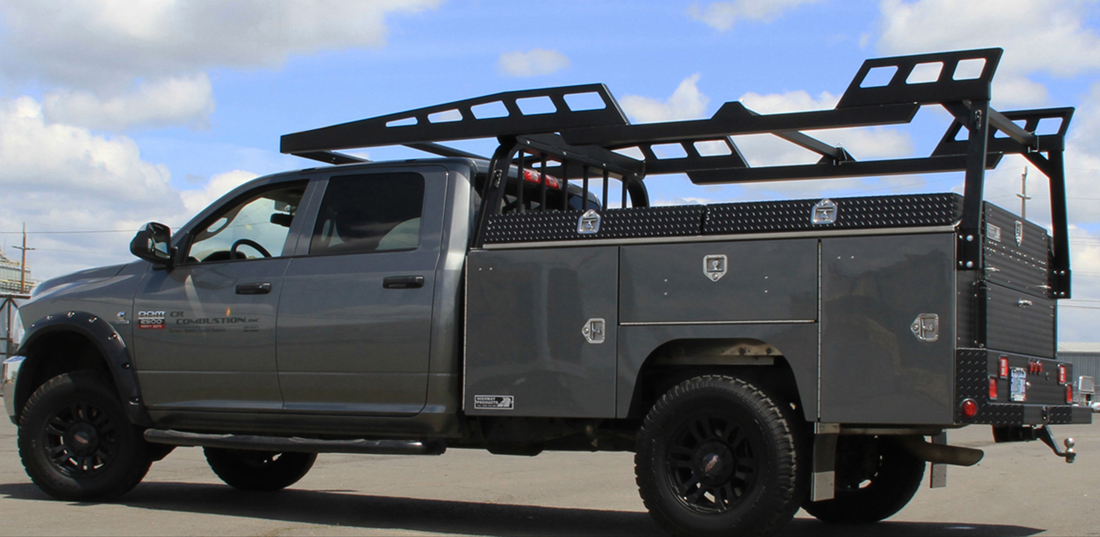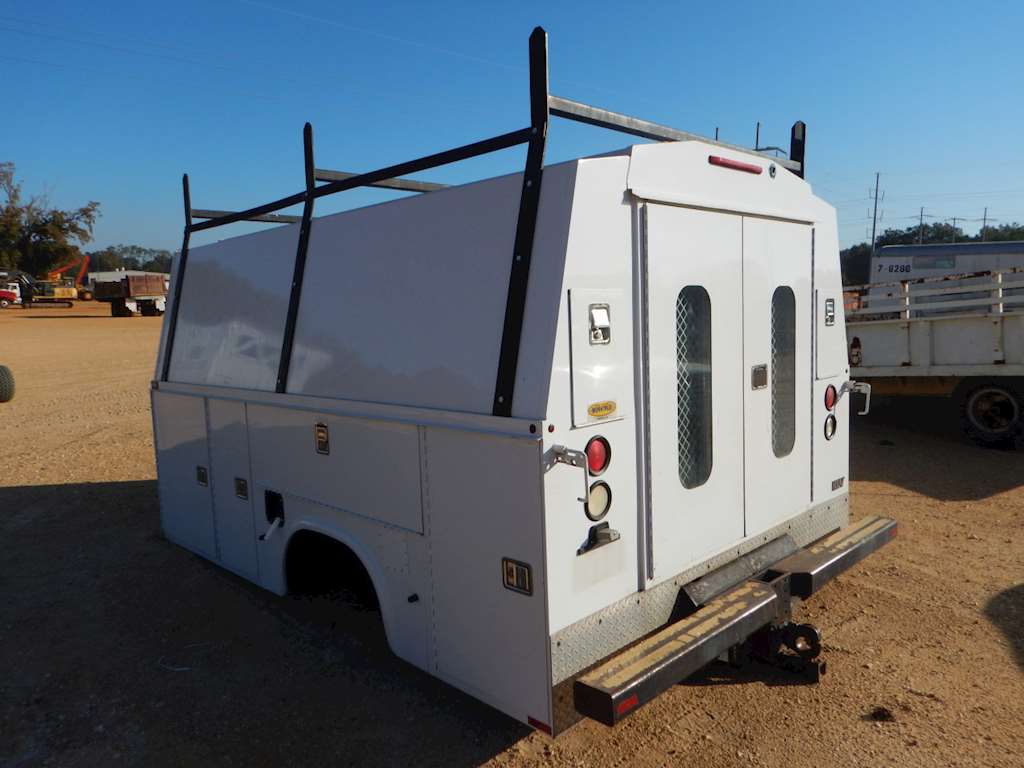Utility Bodies For Pickup Trucks: Transforming Your Workhorse into a Mobile Command Center pickup.truckstrend.com
In the bustling world of trades, services, and mobile businesses, efficiency and organization are not just buzzwords – they are the bedrock of success. For countless professionals, the pickup truck is more than just a means of transport; it’s a mobile office, a workshop, and a vital extension of their capabilities. However, a standard pickup bed, while versatile, often falls short when it comes to the specialized storage, security, and accessibility demanded by rigorous daily operations. This is where utility bodies for pickup trucks step in, transforming a conventional work vehicle into a highly organized, secure, and incredibly efficient mobile command center.
A utility body, often referred to as a service body, is a specialized truck bed replacement designed with multiple compartments, drawers, and racks, meticulously crafted to store tools, equipment, and parts in an organized and accessible manner. Far beyond simple toolboxes, these custom-engineered units revolutionize how professionals like electricians, plumbers, contractors, landscapers, and many others operate. They are the silent partners that ensure every tool has its place, every part is easily found, and every job can be approached with maximum preparedness, directly impacting productivity, safety, and ultimately, profitability.
Utility Bodies For Pickup Trucks: Transforming Your Workhorse into a Mobile Command Center
What Are Utility Bodies? Anatomy and Design
At its core, a utility body is a robust, custom-fabricated structure that replaces the standard pickup truck bed. Imagine a series of lockable drawers, bins, and shelves integrated seamlessly into the side and rear of the vehicle. Typically constructed from heavy-gauge steel or lightweight aluminum, these bodies are designed for durability and longevity, capable of withstanding the rigors of daily use and harsh weather conditions.
Common design elements include:
- Side Compartments: The most defining feature, offering external access to tools and equipment without climbing into the bed. These vary in size and configuration, often featuring adjustable shelves.
- Rear Compartments: Sometimes integrated into the bumper or extending across the rear, providing additional storage.
- Open Cargo Area: Many utility bodies retain a central open bed area, allowing for the transport of larger items, lumber, or machinery.
- Integrated Bumpers: Often heavy-duty, providing protection and a sturdy platform.
- Ladder Racks: Optional but common, allowing for secure transport of ladders, pipes, or other long materials.
- Optional Features: Workbenches, power inverters, compressed air systems, and even small cranes can be integrated into specialized utility bodies.

The Unrivaled Benefits of Utility Bodies
Investing in a utility body is a strategic decision that yields significant returns through enhanced operational efficiency and professionalism.
- Organization and Efficiency: This is perhaps the most significant benefit. With dedicated compartments for every tool and part, technicians spend less time searching and more time working. This streamlined organization translates directly into reduced downtime and increased billable hours. Tools are always where they should be, preventing lost items and frustration.
- Enhanced Security: All compartments are equipped with heavy-duty, often keyed-alike, locking mechanisms. This provides superior protection for valuable tools and equipment against theft and vandalism, a critical concern for mobile professionals. It also shields items from the elements, preventing rust and damage.
- Professional Image: A well-organized utility truck projects an image of professionalism, reliability, and attention to detail. This can significantly enhance a business’s reputation and client trust, differentiating it from competitors.
- Increased Storage Capacity and Accessibility: While a standard truck bed is one large open space, a utility body’s segmented design allows for a surprisingly greater volume of accessible storage. Tools are not piled on top of each other; instead, they are neatly arranged and easily retrieved from the outside of the truck.
- Durability and Longevity: Built to withstand the demands of commercial use, utility bodies are engineered for extreme durability. They protect the underlying truck chassis and components, potentially extending the lifespan of the vehicle itself.
- Customization: Utility bodies can be highly customized to meet the specific needs of various trades, from electricians requiring small parts bins to plumbers needing large pipe storage, ensuring optimal functionality for any mobile operation.

Types of Utility Bodies: Tailoring to Your Trade
The world of utility bodies is diverse, offering specialized solutions for virtually any industry.
- Service Bodies: The most common type, characterized by multiple exterior compartments on the sides and an open cargo area in the middle. Ideal for general contractors, HVAC technicians, and electricians who need organized tool storage but also space for larger materials.
- Enclosed/Kaps Bodies: These bodies feature a fully enclosed, often walk-in, workspace, providing complete weather protection and security. They effectively create a mobile workshop, popular with mobile mechanics, telecom specialists, and those needing a clean, climate-controlled environment for sensitive equipment.
- Flatbed/Platform Bodies with Toolboxes: These combine the versatility of a flatbed for hauling large, irregular loads with integrated, under-mounted or top-mounted toolboxes for secure storage. Excellent for landscapers, heavy equipment operators, and construction crews.
- Crane Bodies: Reinforced utility bodies designed to accommodate small-to-medium sized cranes, often used by sign installers, well drillers, and utility companies for lifting heavy components.
- Specialty Bodies: Custom-fabricated units designed for niche applications, such as telecom splicing vans, mobile welding rigs, or hazardous material transport vehicles, often featuring highly specific internal layouts and external features.
Material Matters:
- Steel: The traditional choice, offering superior strength and impact resistance at a lower cost. However, it’s heavier, impacting fuel economy and payload capacity, and susceptible to rust if not properly maintained.
- Aluminum: Lighter than steel, leading to better fuel efficiency and increased payload capacity. It’s also corrosion-resistant, making it ideal for coastal or harsh environments. The trade-off is typically a higher upfront cost and slightly less impact resistance than steel.
Key Considerations When Choosing a Utility Body
Selecting the right utility body is a critical decision that impacts your operations for years to come.
- Vehicle Compatibility: Ensure the utility body is compatible with your truck’s make, model, cab-to-axle (CA) measurement, and Gross Vehicle Weight Rating (GVWR). Overloading your truck can lead to safety issues and void warranties.
- Trade-Specific Needs: Thoroughly assess your daily operations. What tools, parts, and equipment do you carry? How often do you access them? Do you need a workbench, power outlets, or specific drawer configurations? Map out your ideal workflow.
- Material Choice (Steel vs. Aluminum): Weigh the pros and cons based on your budget, payload requirements, fuel efficiency goals, and environmental conditions.
- Security Features: Examine the quality of locks, hinges, and compartment construction. Look for robust, tamper-resistant designs.
- Accessibility: Consider how easily you can reach tools and equipment. Are the compartments at a comfortable height? Do drawers slide smoothly?
- Budget: Utility bodies represent a significant investment. Balance the upfront cost with the long-term benefits of increased efficiency, security, and professionalism.
- Installation: Professional installation is highly recommended to ensure proper fit, weight distribution, and safety. Improper installation can lead to structural issues or vehicle damage.
- Resale Value: A well-maintained utility body can enhance the resale value of your truck, as it’s a valuable asset for other professionals.
Installation and Maintenance Tips
Proper installation and routine maintenance are crucial for maximizing the lifespan and performance of your utility body.
- Professional Installation is Key: While some might attempt DIY installation, it’s strongly advised to have a certified professional install your utility body. They ensure proper alignment, secure mounting to the truck frame, correct wiring for lights and accessories, and optimal weight distribution, which is vital for vehicle stability and safety.
- Weight Distribution: Always load your utility body evenly. Avoid concentrating heavy items on one side or at the very rear, as this can negatively impact handling, braking, and tire wear. Consult your truck’s GVWR and axle weight ratings.
- Regular Inspection: Periodically check all locks, latches, hinges, and drawer slides for proper operation. Inspect the body mounts for any signs of loosening or corrosion. Address any issues promptly.
- Cleaning: Keep compartments clean and free of debris. Dirt and grime can accumulate, leading to wear on moving parts and potential corrosion.
- Lubrication: Lubricate hinges, drawer slides, and lock mechanisms regularly with a suitable lubricant to ensure smooth operation and prevent seizing.
- Rust Prevention (for steel bodies): Address any scratches or chips in the paint immediately to prevent rust from forming. Consider applying rust-inhibiting coatings.
Utility Body Price Guide
The cost of a utility body varies significantly based on material, size, features, brand, and complexity. This table provides a general range; installation costs are typically separate.
| Type of Utility Body | Material | Typical Price Range (USD) | Key Features & Considerations |
|---|---|---|---|
| Standard Service Body | Steel | $4,000 – $8,000 | Robust, high capacity, traditional choice; heavier. |
| Standard Service Body | Aluminum | $7,000 – $12,000 | Lighter, fuel-efficient, corrosion-resistant; higher cost. |
| Enclosed Kaps Body | Steel/Aluminum | $10,000 – $25,000+ | Mobile workshop, full weather protection, enhanced security. |
| Flatbed w/ Toolboxes | Steel/Aluminum | $3,500 – $10,000 | Versatile for large loads, integrated storage, modular. |
| Crane Body (Basic) | Steel | $8,000 – $15,000+ | Reinforced for crane mounting, often with outrigger provisions. |
| Custom/Specialty Body | Varies | $15,000 – $50,000+ | Highly specialized, built to exact specifications. |
| Installation Cost | N/A | $500 – $2,000+ | Professional installation recommended for safety and warranty. |
Note: Prices are estimates and can fluctuate based on market conditions, brand, specific features, and regional differences. Always obtain multiple quotes from reputable dealers.
Frequently Asked Questions (FAQ)
Q1: Can I install a utility body myself?
A1: While possible, professional installation is strongly recommended. It ensures proper fit, secure mounting to the truck frame, correct wiring, and critical weight distribution for safety and vehicle stability.
Q2: Do utility bodies affect fuel economy?
A2: Yes, they can. The added weight, especially with steel bodies, and altered aerodynamics will generally lead to a slight decrease in fuel economy compared to a standard pickup bed. Aluminum bodies minimize this impact due to their lighter weight.
Q3: What’s the typical lifespan of a utility body?
A3: With proper maintenance, a high-quality utility body can last 15-20 years or even longer, often outliving the truck it’s initially installed on. Steel bodies are known for their rugged longevity, while aluminum bodies resist corrosion exceptionally well.
Q4: Can I transfer a utility body to a new truck?
A4: Yes, in many cases, utility bodies can be transferred to a new truck, provided the new truck has a compatible chassis, bed length (cab-to-axle measurement), and GVWR. This makes them a valuable long-term investment.
Q5: Are utility bodies universal for all pickup trucks?
A5: No, utility bodies are designed to fit specific truck chassis sizes and configurations. You’ll need to match the utility body’s dimensions (especially the cab-to-axle measurement) to your truck’s specifications.
Q6: How do utility bodies impact my truck’s warranty?
A6: Generally, installing an aftermarket utility body does not void the entire vehicle warranty. However, if a vehicle component fails directly due to the installation or use of the utility body (e.g., frame damage from overloading), that specific repair might not be covered. Always consult your truck manufacturer’s warranty terms and consider professional installation.
Conclusion
Utility bodies for pickup trucks are more than just storage solutions; they are essential tools that empower mobile professionals to operate with unparalleled efficiency, security, and professionalism. By transforming a standard pickup into a highly organized and accessible mobile workstation, they minimize downtime, protect valuable assets, and project a capable image to clients. While representing a significant investment, the long-term benefits in productivity, convenience, and peace of mind make a utility body an indispensable asset for any business relying on a mobile workforce. For those who demand the most from their workhorse, a utility body isn’t just an upgrade – it’s a strategic necessity.
